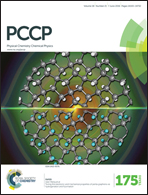Near-infrared squaraine co-sensitizer for high-efficiency dye-sensitized solar cells
Abstract
A combination of squaraine-based dyes (SPSQ1 and SPSQ2) and a ruthenium-based dye (N3) were chosen as co-sensitizers to construct efficient dye-sensitized solar cells. The co-sensitization of squaraine dyes with N3 enhanced their light-harvesting properties as a result of the broad spectral coverage in the region 350–800 nm. The co-sensitized solar cells based on SPSQ2 + N3 showed the highest short circuit current density of 17.10 mA cm−2, an open circuit voltage of 0.66 V and a fill factor of 0.73, resulting in the highest power conversion efficiency of 8.2%, which is higher than that of the dye-sensitized solar cells based on the individual SPSQ1 and SPSQ2 dyes. The high power conversion efficiency of SPSQ2 + N3 was ascribed to its good light-harvesting properties, which resulted from its broader incident photon current conversion spectrum than that of the individual dyes. The high electron life time and electron recombination, which were the main causes of the higher efficiency of the device, were successfully analysed and correlated using transient absorption spectrometry and intensity-modulated photovoltage spectrometry.


 Please wait while we load your content...
Please wait while we load your content...